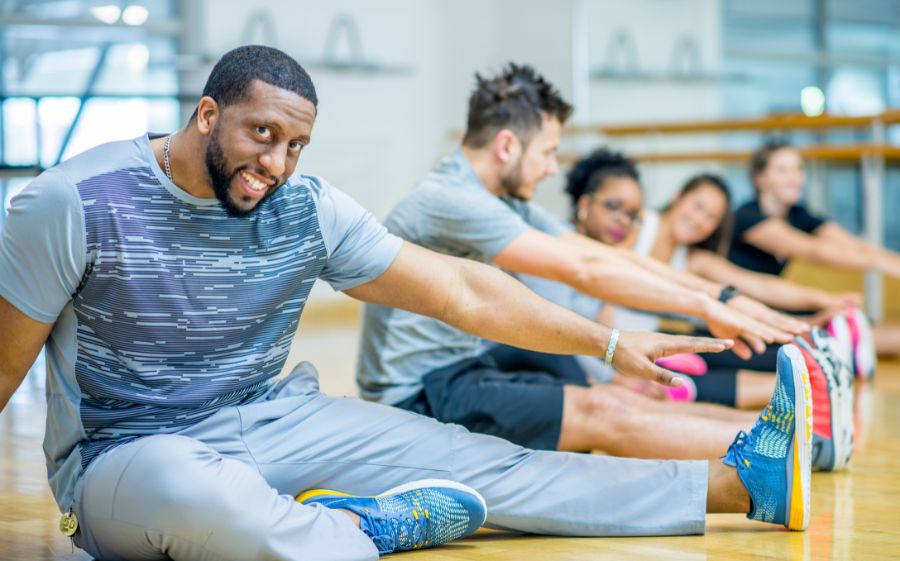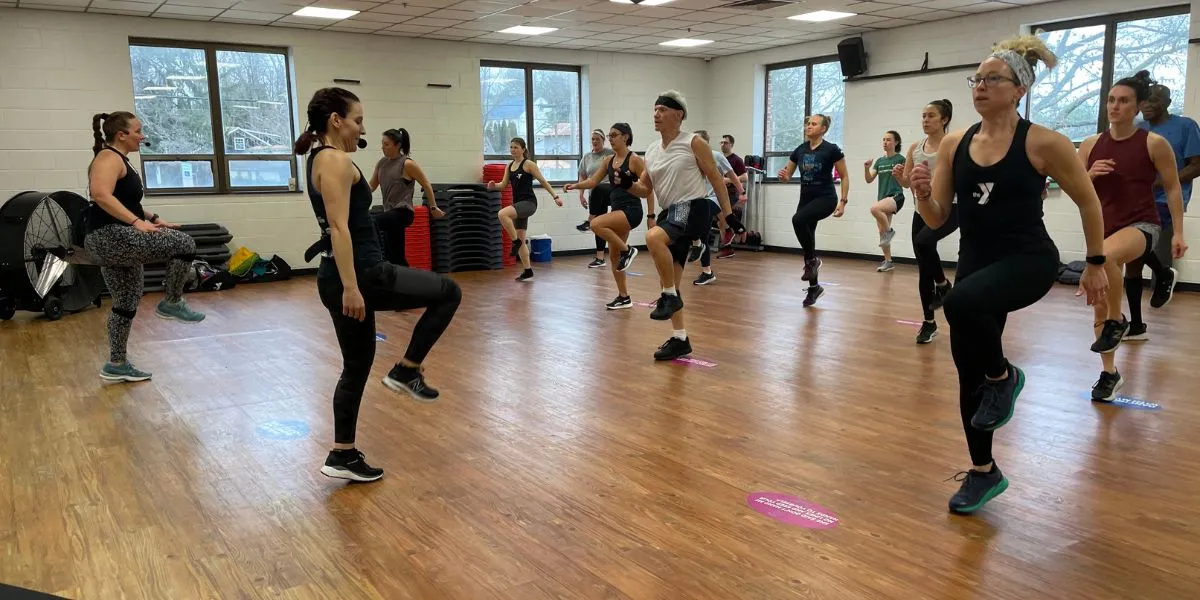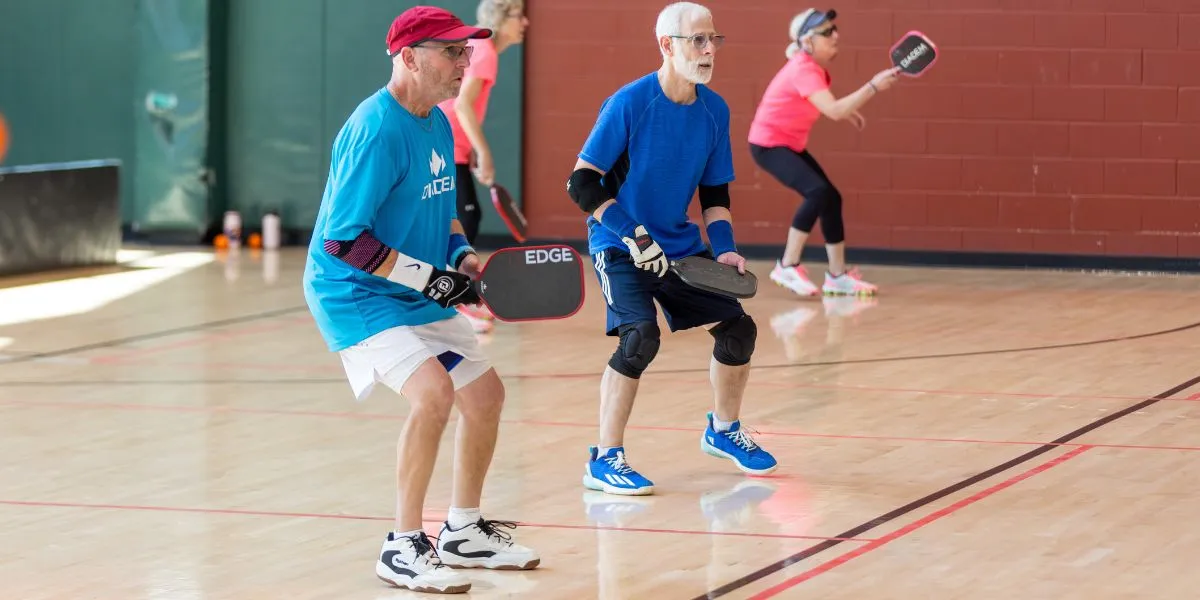
Are you ready to take your workout to the next level? Choosing the right shoes for your physical activity can make all the difference, whether you're a seasoned athlete or starting your fitness journey.
This article explains how to choose the right footwear for your physical activity, including factors to consider before you make that investment. Get ready to step up your game and feel the difference the right shoes can make!
Why Choosing the Right Shoes Matters
Investing in quality shoes made for specific physical activity is essential for several reasons:
- Injury prevention: The right footwear provides the necessary support, cushioning and stability for your feet and ankles, helping to prevent injuries. Proper shoes can also help reduce the risk of common issues like shin splints, plantar fasciitis, and ankle sprains.
- Comfort: Proper footwear enhances comfort, ensuring you focus on your workout without distractions from aching feet or blisters. Comfortable sneakers can help you stay motivated and consistent with your exercise routine.
- Performance improvement: The right shoes can improve performance by offering the right balance of flexibility, traction and energy return. Whether you’re running, jumping or lifting weights, proper footwear can help you move more efficiently and effectively.
- Longevity: Choosing the ideal shoes for your physical activity can increase longevity and save you money in the long run.
Wearing the wrong shoes can lead to discomfort, pain and even injuries, such as stress fractures and Achilles tendonitis. Investing in a pair that suits your needs and preferences is crucial. Don’t settle for a one-size-fits-all approach to athletic footwear.
Factors to Consider When Selecting Shoes for Physical Activity
When choosing footwear for physical activity, keep these factors in mind:
- Type of physical activity: Different activities need specific features in footwear, such as lateral support for court sports or cushioning for running.
- Age and fitness level: Consider your current fitness level and any age-related factors impacting your shoe choice. If you’re new to a type of exercise, you may need more support and cushioning than a seasoned athlete.
- Time spent on the activity: Longer workouts may need more cushioning and support to help reduce fatigue and prevent injuries. If you spend hours at the gym or on the track, consider investing in sneakers to maintain your endurance.
- Location: Indoor and outdoor surfaces have different demands, so consider where you’ll be exercising most often.
- Proper fit: Proper fit is crucial for comfort and injury prevention. When choosing your exercise shoes, ensure you have enough room in the toe box and that your heel doesn’t slip around.
Taking time to assess your needs and preferences based on these factors will help you narrow your options and find the perfect pair of sneakers. If you’re unsure where to start, don’t be afraid to ask for help from a fitness professional or a knowledgeable salesperson.
Choosing the Best Shoes for Your Physical Activity
Different types of activity need different shoe types. Here are some specifics to selecting proper footwear for various types of exercise:
Running Shoes
If you’re a runner, you know that not all running shoes are equal. When selecting a pair, consider the level of cushioning and support you need based on your running style and preferences. The right running footwear will help you run longer and faster.
You should also determine your foot type — neutral, overpronated, or supinated — to find a sneaker that offers the right level of stability. Additionally, think about the surface you’ll be running on most often. Road, trail and track shoes have different features to accommodate varying terrains.
HIIT Shoes
High-intensity interval training (HIIT) workouts require sneakers that keep up with quick, multi-directional movements. When shopping for HIIT shoes, look for lateral support and stability to prevent ankle injuries during side-to-side exercises.
Cushioning and impact protection are crucial to lessen joint stress during high-impact jumps and plyometrics. Finally, look for shoes with a flexible, breathable upper to keep your feet cool and comfortable during intense sessions.
Court Shoes
If you enjoy tennis, pickleball or basketball, court shoes are essential for your safety and performance. Court shoes should offer excellent lateral support and stability to prevent ankle rolls during quick, lateral movements. A non-marking sole is a must-have to avoid scuffing indoor courts. Ample cushioning and comfort are crucial for long matches.
Cross-Training Shoes
Cross-training shoes are the perfect investment if you enjoy various gym activities. These sneakers can handle a range of movements, from lifting weights to jumping rope. When selecting cross-trainers, look for a balance of support and stability for lateral movements. Your cross-trainers should also be comfortable and breathable for longer workouts.
Weightlifting Shoes
If you’re chasing gains, a pair of dedicated weightlifting shoes can help you take your lifts to the next level. Weightlifting shoes feature a flat, stable sole to provide a solid base for heavy lifts. They also offer ankle support to keep your feet secure during movements like squats and deadlifts. Durability is also key, as weightlifting shoes must withstand repeated use.
Group Class Shoes
If you love group fitness classes like Les Mills™, Zumba or aerobics, the right footwear can make your workout more enjoyable and effective. Look for sneakers that offer flexibility and a wide range of motion to accommodate dance or aerobic moves and high-impact exercises. Cushioning and shock absorption are essential to lessen the impact of high-intensity movements. Additionally, a grippy sole provides traction for quick transitions and changes in direction.
Tips for Purchasing the Right Shoe for Your Workouts
When shopping for your new athletic shoes, keep these tips in mind:
- Shop later in the day: Try on shoes when your feet are slightly swollen from daily activities for a more accurate fit. Your feet tend to expand throughout the day, so shopping later can help ensure a comfortable fit.
- Measure your feet: Always measure your foot size and width, as sizes vary between brands.
- Wear socks: When trying on shoes, wear the same type of socks you’ll wear during your workouts, as the thickness of the socks can affect the fit and feel.
- Walk around: Walk around the store to get a feel for the fit and comfort of the shoes. Pay attention to any slipping, rubbing or pinching that may cause discomfort or blisters.
- Buy from specialty stores: Athletic footwear stores often have knowledgeable staff who can provide personalized recommendations. They can inform you of the recommended shoes for various physical activities based on your needs and preferences.
- Check return policies: If shopping online, check the retailer’s return policy in case the shoes don’t fit as expected.
Get Moving With the Greater Philadelphia YMCA
Now that you know how to choose the right sneakers for your physical activity, it’s time to put them to good use. If you’re in the greater Philadelphia area, consider joining us at the Y! Whether you want to experience group fitness classes, practice your track workouts or take up a pickleball, our locations have something for you.
We offer several health and fitness programs, including Les Mills™ workouts, group classes, virtual workouts, and personal training. At the Greater Philadelphia YMCA, we believe that everyone should have access to a healthier lifestyle. That’s why we offer financial aid to help everyone start the journey toward a healthier life. Explore our membership options today and discover all the Y has to offer!

